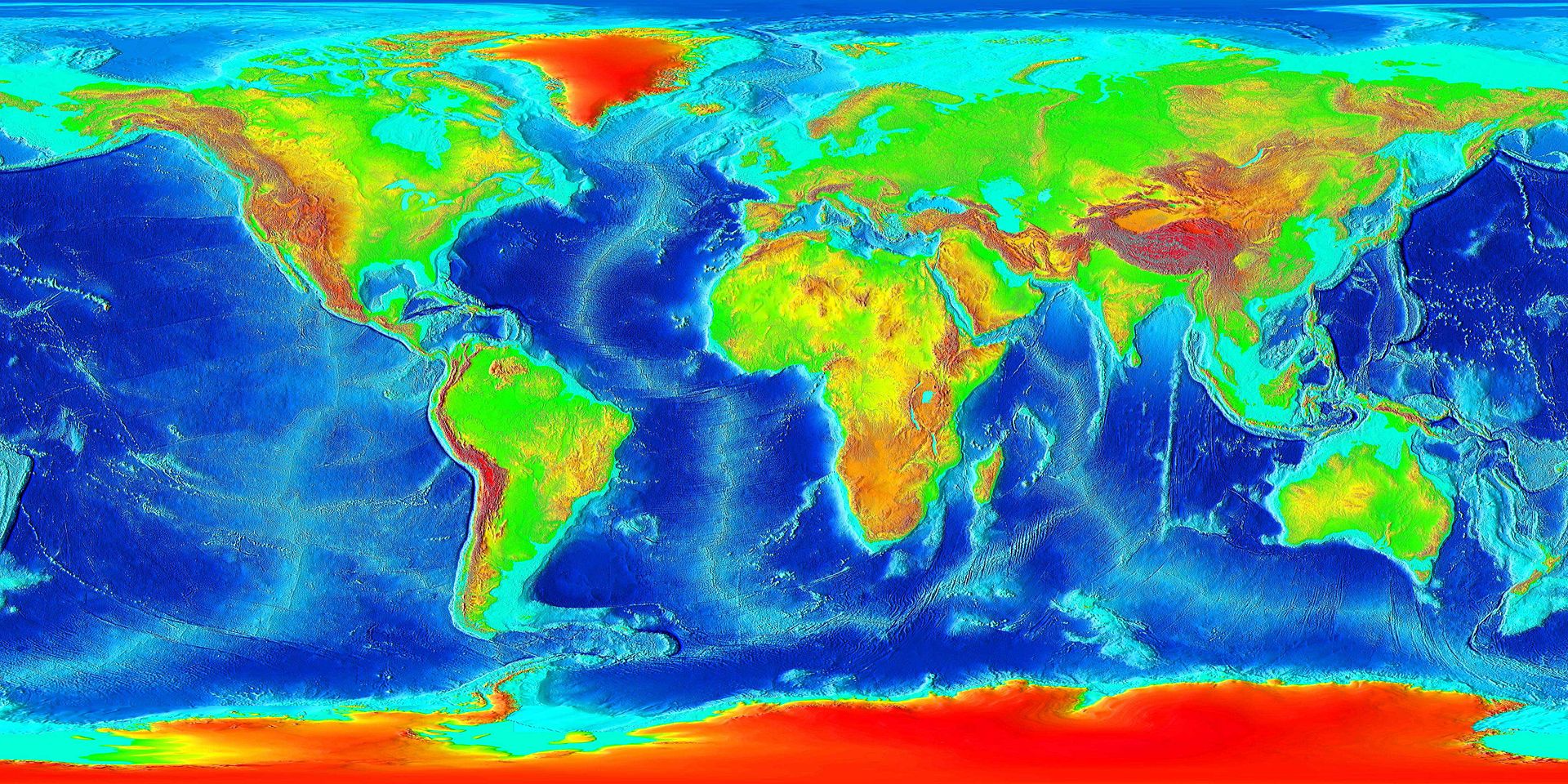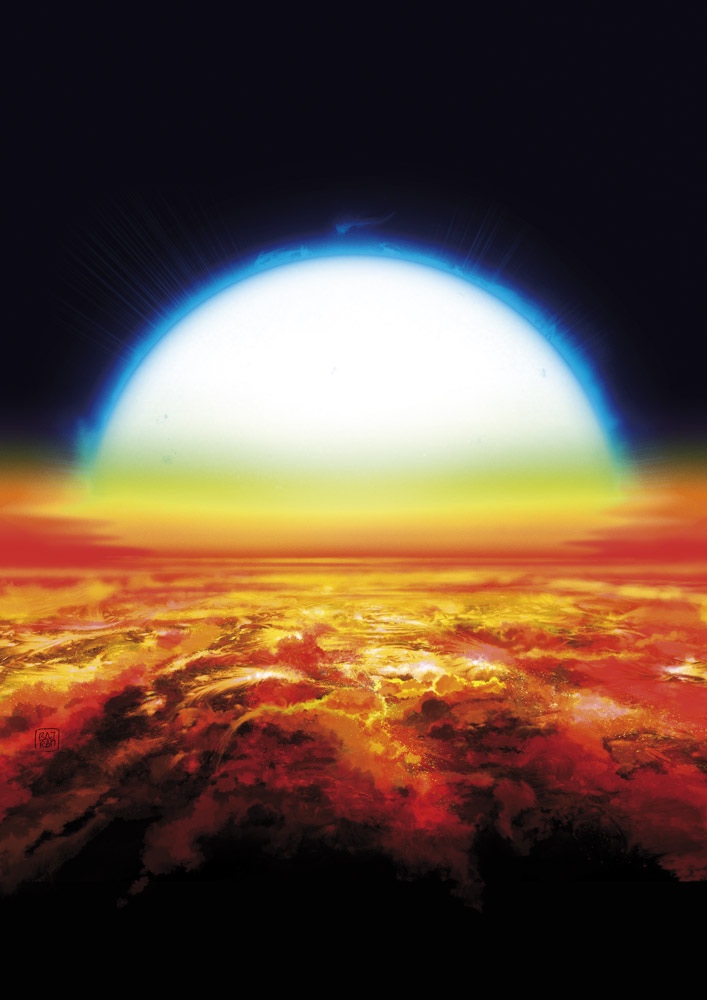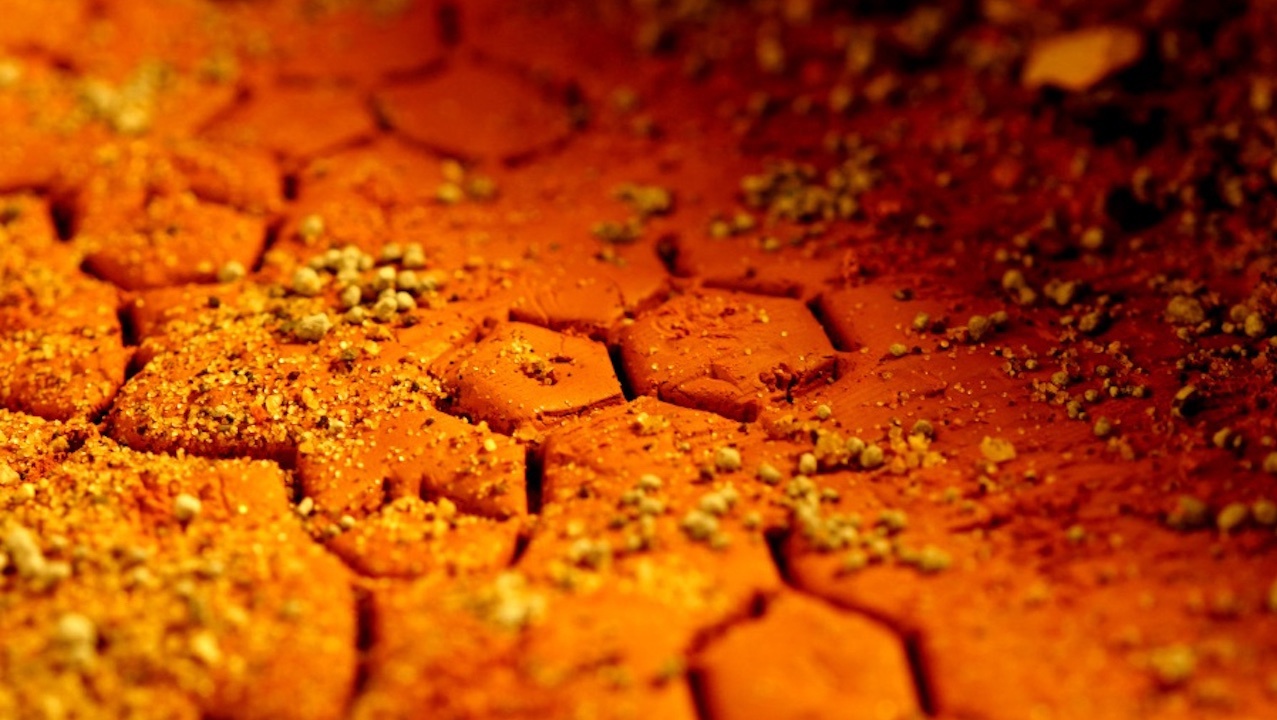Mars is often considered to be the planet most similar to the Earth. Earth however, is capable of supporting life, Mars on the other hand could not. There was once a time when it was warmer and wetter and could support life. Exploring life on Earth shows us that bacteria known as extremophiles can live in the most harsh conditions on Earth, it may just be possible that there are places on Mars that could also support these hardy forms of life. A new paper explores that possibility by studying the most extreme Earth-based bacteria that could survive under ground on Mars.
Plants Would Still Grow Well Under Alien Skies

Photosynthesis changed Earth in powerful ways. When photosynthetic organisms appeared, it led to the Great Oxygenation Event. That allowed multicellular life to evolve and resulted in the ozone layer. Life could venture onto land, protected from the Sun’s intense ultraviolet radiation.
But Earth’s photosynthetic organisms evolved under the Sun’s specific illumination. How would plants do under other stars?
Continue reading “Plants Would Still Grow Well Under Alien Skies”How Oumuamua Changes Our Perspective on Galactic Panspermia

Panspermia is an innately attractive idea that’s gained prominence in recent decades. Yet, among working scientists, it gets little attention. There are good reasons for their relative indifference, but certain events spark renewed interest in panspermia, even among scientists.
The appearance of Oumuamua in our Solar System in 2017 was one of them.
Continue reading “How Oumuamua Changes Our Perspective on Galactic Panspermia”Toxic Perchlorate on Mars Could Make Life More Interesting
The search for life in the Universe has fascinated humans for centuries. Mars has of course been high on the list of potential habitats for alien existence but since the numerous spacecraft images that have come back showing a barren landscape, it seems Mars may not be so habitable after all. That is, until recently. The Martian regolith, the top layer of dust upon the surface has been found to be full of perchlorate salts. These chemicals are poisonous to most life on Earth but a new study suggests that some extremophile protein enzymes and RNA may just be able to survive!
Continue reading “Toxic Perchlorate on Mars Could Make Life More Interesting”Extremophiles: Why study them? What can they teach us about finding life beyond Earth?

Universe Today has conducted some incredible examinations regarding a plethora of scientific fields, including impact craters, planetary surfaces, exoplanets, astrobiology, solar physics, comets, planetary atmospheres, planetary geophysics, cosmochemistry, meteorites, and radio astronomy, and how these disciplines can help scientists and the public gain greater insight into searching for life beyond Earth. Here, we will discuss the immersive field of extremophiles with Dr. Ivan Paulino-Lima, who is a Senior Research Investigator at Blue Marble Space Institute of Science and the Co-Founder and Chief Science Officer for Infinite Elements Inc., including why scientists study extremophiles, the benefits and challenges, finding life beyond Earth, and proposed routes for upcoming students. So, why is it so important to study extremophiles?
Continue reading “Extremophiles: Why study them? What can they teach us about finding life beyond Earth?”Could Earth Life Survive on a Red Dwarf Planet?

Even though exoplanet science has advanced significantly in the last decade or two, we’re still in an unfortunate situation. Scientists can only make educated guesses about which exoplanets may be habitable. Even the closest exoplanet is four light-years away, and though four is a small integer, the distance is enormous.
That doesn’t stop scientists from trying to piece things together, though.
Continue reading “Could Earth Life Survive on a Red Dwarf Planet?”Could Life Exist in Molecular Clouds?

Our search for life beyond Earth is still in its infancy. We’re focused on Mars and, to a lesser extent, ocean moons like Jupiter’s Europa and Saturn’s Enceladus. Should we extend our search to cover more unlikely places like molecular clouds?
Continue reading “Could Life Exist in Molecular Clouds?”There’s a Vast Microbial Ecosystem Underneath the Crater that Wiped Out the Dinosaurs

How did life arise on Earth? How did it survive the Hadean eon, a time when repeated massive impacts excavated craters thousands of kilometres in diameter into the Earth’s surface? Those impacts turned the Earth into a hellish place, where the oceans turned to steam, and the atmosphere was filled with rock vapour. How could any living thing have survived?
Ironically, those same devastating impacts may have created a vast subterranean haven for Earth’s early life. Down amongst all those chambers and pathways, pumped full of mineral-rich water, primitive life found the shelter and the energy needed to keep life on Earth going. And the evidence comes from the most well-known extinction event on Earth: the Chicxulub impact event.
Continue reading “There’s a Vast Microbial Ecosystem Underneath the Crater that Wiped Out the Dinosaurs”Seriously, Life Really Does Get Around. It was Found in Rocks Deep Beneath the Seafloor

After a lot of hard work spanning many years, a team of scientists have discovered something surprising. They’ve found abundant bacterial life in tiny cracks in undersea volcanic rock in the Earth’s crust. The bacteria are thriving in clay deposits inside these tiny cracks.
This discovery is generating new excitement around the hope of finding life on Mars.
Continue reading “Seriously, Life Really Does Get Around. It was Found in Rocks Deep Beneath the Seafloor”Nutrient-Poor and Energy-Starved. How Life Might Survive at the Extremes in the Solar System

Our growing understanding of extremophiles here on Earth has opened up new possibilities in astrobiology. Scientists are taking another look at resource-poor worlds that appeared like they could never support life. One team of researchers is studying a nutrient-poor region of Mexico to try to understand how organisms thrive in challenging environments.
Continue reading “Nutrient-Poor and Energy-Starved. How Life Might Survive at the Extremes in the Solar System”

